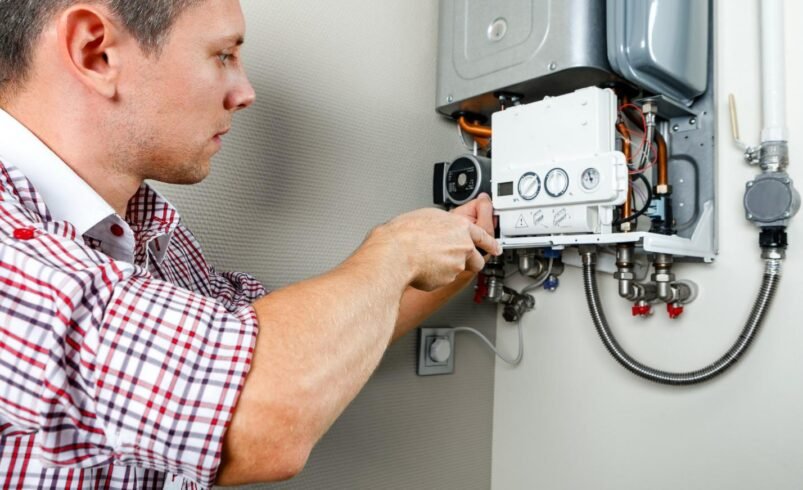Water Heater Installation: What are the Essentials?

Installation of your HVAC appliances should be done right the first time, and this includes setting up the entire water heating system. Whether you have a commercial or residential need, you’ll often find that hot water can be convenient with showers, baths, laundry, dishwashing, and other general household tasks. See more about a shower on this site here.
You just need to select the right appliance that can provide for the entire family’s needs, install everything correctly, connect the electrical components, get the plumbing ready, and
Water heater installation refers to the process of setting up a water heating system in a residential or commercial property to provide hot water for various purposes such as bathing, washing dishes, laundry, and general household use. It involves selecting an appropriate water heater unit, and ensuring the system operates safely and efficiently.
What is the Breakdown of these Jobs?
Assessment: Before installation, see the home’s hot water needs, available space, and existing plumbing and wiring. Determine the appropriate type and size of the tank heater based on factors such as the number of occupants, usage patterns, and energy efficiency requirements.
Selection of the Right HVAC: Choose the right type based on the property’s requirements and preferences. Common types include tank-type or traditional storage tanks, tankless ones that are on-demand or instantaneous, and those that are powered by solar panels.
Preparation: Prepare the installation site by clearing the area around the chosen location for the HVAC. Ensure there is proper ventilation and sufficient space for installation, maintenance, and service access.
Installation: Follow manufacturer instructions and local building codes to install the water heater safely and correctly. This typically involves:
Testing: After installation, test everything to ensure it functions properly. Check for leaks, verify output, and adjust temperature settings as needed.
Inspection and Compliance: Depending on local regulations, schedule an inspection to verify that the installation meets building codes and safety standards. Obtain any necessary permits before starting the job, and if you find it to be a hassle, you can always call an expert to do the job.
Maintenance and Safety: Educate the property owner or occupants about the right procedures involved, including flushing the tank (for tank-type water heaters), checking pressure relief valves, and inspecting for signs of corrosion or damage. Emphasize safety precautions such as keeping flammable materials away from gas water heaters and setting the thermostat to a safe temperature.
Water heater installation requires careful planning, technical knowledge, and adherence to safety protocols to ensure a reliable hot water supply and prevent potential hazards or malfunctions. Hiring a qualified professional to install a water heater is often recommended to ensure the job is done correctly and safely.
Different Types to Know
Tank-Type: These are the most common type, consisting of a tank that stores and heats water until it’s needed.
Tankless: Also known as on-demand or instantaneous water models, they heat water directly without the need for a storage tank.
Heat Pumps: These use electricity to move heat from one place to another instead of generating heat directly, making them more energy efficient.
Solar Varieties: These use solar panels to capture and convert sunlight into heat energy to heat water.
Features and Considerations
Capacity: Choose a water heater with sufficient capacity to meet the hot water demands of your household or building.
Energy Efficiency: Look for ENERGY STAR-certified models or high-efficiency units to reduce energy consumption and lower utility bills.
Fuel Type: Water heaters can be powered by electricity, natural gas, propane, or solar energy, so consider the availability and cost of fuel options.
Size and Space Requirements: Consider the physical dimensions and installation requirements to ensure the water heater fits the available space.
Warranty: Check the warranty coverage and terms offered by the manufacturer to protect against defects and malfunctions.
Installation
- Follow manufacturer instructions and local building codes for proper installation.
- Hire a qualified professional plumber or HVAC technician if you’re not familiar with installation procedures. See info about becoming a technician at this link: https://www.learnhowtobecome.org/hvac-technician/.
- Ensure adequate ventilation, proper electrical or gas connections, and compliance with safety standards.
Maintenance
- Regularly inspect the water heater for leaks, corrosion, or signs of wear and tear.
- Flush the tank periodically to remove sediment buildup and maintain efficiency.
- Test the pressure relief valve and temperature settings to ensure safe operation.
- Follow the manufacturer’s recommendations for maintenance tasks and intervals.
- See if you can schedule professional services at least once a year to ensure optimal efficiency.
Safety Considerations
- Install carbon monoxide detectors near gas-powered water heaters to detect leaks or combustion fumes.
- Keep flammable materials away from water heaters to reduce the risk of fire.
- Set the thermostat to a safe temperature to prevent scalding and reduce energy consumption.
- Educate household members or occupants about proper usage, maintenance, and safety precautions.
Repair and Replacement
- Promptly address any issues such as leaks, inadequate hot water, unusual noises, or malfunctions.
- Consider the age and condition of the water heater when deciding whether to repair or replace it.
- Hire a licensed professional for repairs or replacement to ensure safety and compliance with regulations.



